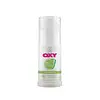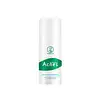What's inside
What's inside
 Key Ingredients
Key Ingredients

 Benefits
Benefits

 Concerns
Concerns

 Ingredients Side-by-side
Ingredients Side-by-side

Water
Skin ConditioningEthylhexyl Methoxycinnamate
UV AbsorberButylene Glycol
HumectantSilica
AbrasiveCyclopentasiloxane
EmollientPolysorbate 60
EmulsifyingBis-Ethylhexyloxyphenol Methoxyphenyl Triazine
Skin ConditioningEthylhexyl Triazone
UV AbsorberAmmonium Acryloyldimethyltaurate/Vp Copolymer
Acrylates/C10-30 Alkyl Acrylate Crosspolymer
Emulsion StabilisingMethylparaben
PreservativeTriethanolamine
BufferingAllantoin
Skin ConditioningChamomilla Recutita Flower Extract
MaskingPropylparaben
PreservativeDisodium EDTA
Aroma
Sodium Hyaluronate
HumectantWater, Ethylhexyl Methoxycinnamate, Butylene Glycol, Silica, Cyclopentasiloxane, Polysorbate 60, Bis-Ethylhexyloxyphenol Methoxyphenyl Triazine, Ethylhexyl Triazone, Ammonium Acryloyldimethyltaurate/Vp Copolymer, Acrylates/C10-30 Alkyl Acrylate Crosspolymer, Methylparaben, Triethanolamine, Allantoin, Chamomilla Recutita Flower Extract, Propylparaben, Disodium EDTA, Aroma, Sodium Hyaluronate
Water
Skin ConditioningHydrogenated Polyisobutene
EmollientDicaprylyl Carbonate
EmollientButylene Glycol
HumectantPolysorbate 60
EmulsifyingDimethicone
EmollientAmmonium Acryloyldimethyltaurate/Vp Copolymer
Silica
AbrasiveGlyceryl Stearate Citrate
EmollientGlyceryl Acrylate/Acrylic Acid Copolymer
HumectantDimethiconol
EmollientGlycerin
HumectantMethylparaben
PreservativeSorbitol
HumectantO-Cymen-5-Ol
AntimicrobialBetaine
HumectantDisodium EDTA
Propylene Glycol
HumectantChondrus Crispus Extract
Skin ConditioningButyl Avocadate
Skin ConditioningArginine
MaskingParfum
MaskingPropylparaben
PreservativeAlcohol
AntimicrobialPvm/Ma Copolymer
Emulsion StabilisingPhenoxyethanol
PreservativeCentella Asiatica Extract
CleansingAloe Barbadensis Leaf Juice
Skin ConditioningLecithin
EmollientPrunus Cerasus Extract
AntioxidantPyrus Malus Juice
Skin ConditioningChlorphenesin
AntimicrobialOpuntia Streptacantha Stem Extract
HumectantSalicylic Acid
MaskingBeta-Glucan
Skin ConditioningCitric Acid
BufferingAmylopectin
Satureja Hortensis Extract
MaskingDextrin
AbsorbentSodium Benzoate
MaskingPotassium Sorbate
PreservativeXanthan Gum
EmulsifyingSodium Dehydroacetate
PreservativeChamomilla Recutita Flower Extract
MaskingAsiaticoside
AntioxidantMadecassic Acid
Skin ConditioningAsiatic Acid
Skin ConditioningEthylhexylglycerin
Skin ConditioningWater, Hydrogenated Polyisobutene, Dicaprylyl Carbonate, Butylene Glycol, Polysorbate 60, Dimethicone, Ammonium Acryloyldimethyltaurate/Vp Copolymer, Silica, Glyceryl Stearate Citrate, Glyceryl Acrylate/Acrylic Acid Copolymer, Dimethiconol, Glycerin, Methylparaben, Sorbitol, O-Cymen-5-Ol, Betaine, Disodium EDTA, Propylene Glycol, Chondrus Crispus Extract, Butyl Avocadate, Arginine, Parfum, Propylparaben, Alcohol, Pvm/Ma Copolymer, Phenoxyethanol, Centella Asiatica Extract, Aloe Barbadensis Leaf Juice, Lecithin, Prunus Cerasus Extract, Pyrus Malus Juice, Chlorphenesin, Opuntia Streptacantha Stem Extract, Salicylic Acid, Beta-Glucan, Citric Acid, Amylopectin, Satureja Hortensis Extract, Dextrin, Sodium Benzoate, Potassium Sorbate, Xanthan Gum, Sodium Dehydroacetate, Chamomilla Recutita Flower Extract, Asiaticoside, Madecassic Acid, Asiatic Acid, Ethylhexylglycerin
Ingredients Explained
These ingredients are found in both products.
Ingredients higher up in an ingredient list are typically present in a larger amount.
Ammonium Acryloyldimethyltaurate/Vp Copolymer (let's call it AAVC for short) is a synthetically created polymer. It's used as a film-forming agent and used to thicken the consistency of products.
AAVC is able to increase the consistency and viscosity of products due to its large molecule size. It also prevents ingredients from separating.
Butylene Glycol (or BG) is used within cosmetic products for a few different reasons:
Overall, Butylene Glycol is a safe and well-rounded ingredient that works well with other ingredients.
Though this ingredient works well with most skin types, some people with sensitive skin may experience a reaction such as allergic rashes, closed comedones, or itchiness.
Learn more about Butylene GlycolChamomilla Recutita Flower Extract comes from the Chamomile flower.
Chamomile is rich in antioxidants and has anti-inflammatory properties. Several compounds found in chamomile help with soothing, such as bisbolol.
Antioxidant components in chamomile make it an effective ingredient to help slow the signs of aging. Antioxidants help fight free-radical molecules, or molecules that may damage your skin.
Essential oils from chamomile have been found to improve wound healing due to its antimicrobial properties.
Ancient Greeks and Egyptians used Chamomile to treat skin redness and dryness. Chamomile has also been used to help treat stomach issues.
Learn more about Chamomilla Recutita Flower ExtractDisodium EDTA plays a role in making products more stable by aiding other preservatives.
It is a chelating agent, meaning it neutralizes metal ions that may be found in a product.
Disodium EDTA is a salt of edetic acid and is found to be safe in cosmetic ingredients.
Learn more about Disodium EDTAMethylparaben is a preservative and is a paraben. It is used to prevent the growth of fungus, mold, and other harmful bacteria. Parabens are chemicals used as preservatives in both cosmetics and food.
Methylparaben can be synthetically created. It can also be found naturally in some fruits, such as blueberries.
Oftentimes, Methylparaben is combined with other parabens to help increase the shelf life.
The safety of Methylparaben is currently being studied. While ongoing studies are looking into the safety of parabens, the results have been very mixed. Some studies have not found Methylparaben to be harmful.
Learn more about MethylparabenPolysorbate 60 is used to help stabilize products. It is a surfactant and emulsifier. These properties help keep ingredients together in a product. Surfactants help reduce surface tension between ingredients with different states, such as liquids and solids. Emulsifiers help prevent oils and waters from separating.
Polysorbate 60 is sorbitol-based and created from the ethoxylation of sorbitan. Ethoxylation is a chemical reaction used to add ethylene oxide. Sorbitan is a the dehydrated version of sorbitol, a sugar found in fruits.
In this case, the 60 comes from reacting 60 units of ethylene oxide with sorbitan.
Polysorbates are commonly used in medicine and foods.
Learn more about Polysorbate 60Propylparaben is a preservative and is a paraben with antifungal and antimicrobial properties.
This ingredient can be naturally found in plants and insects, but most of it is synthetically manufactured for human use. In cosmetics, it is usually created by reacting para-aminobenzoic acid and propanol (an alcohol).
You can usually find this ingredient in water-based products.
Parabens have come under controversy due to the claim they are hormone disruptors. Studies show conflicting results. We recommend speaking with a professional if you have any concerns.
Propylparaben is commonly found in food, medicine, and cosmetics.
Learn more about PropylparabenSilica, also known as silicon dioxide, is a naturally occurring mineral. It is used as a fine, spherical, and porous powder in cosmetics.
Though it has exfoliant properties, the function of silica varies depending on the product.
The unique structure of silica enhances the spreadability and adds smoothness, making it a great texture enhancer.
It is also used as an active carrier, emulsifier, and mattifier due to its ability to absorb excess oil.
In some products, tiny microneedles called spicules are made from silica or hydrolyzed sponge. When you rub them in, they lightly polish away dead skin layers and enhance the penetration of active ingredients.
Learn more about SilicaWater. It's the most common cosmetic ingredient of all. You'll usually see it at the top of ingredient lists, meaning that it makes up the largest part of the product.
So why is it so popular? Water most often acts as a solvent - this means that it helps dissolve other ingredients into the formulation.
You'll also recognize water as that liquid we all need to stay alive. If you see this, drink a glass of water. Stay hydrated!
Learn more about Water